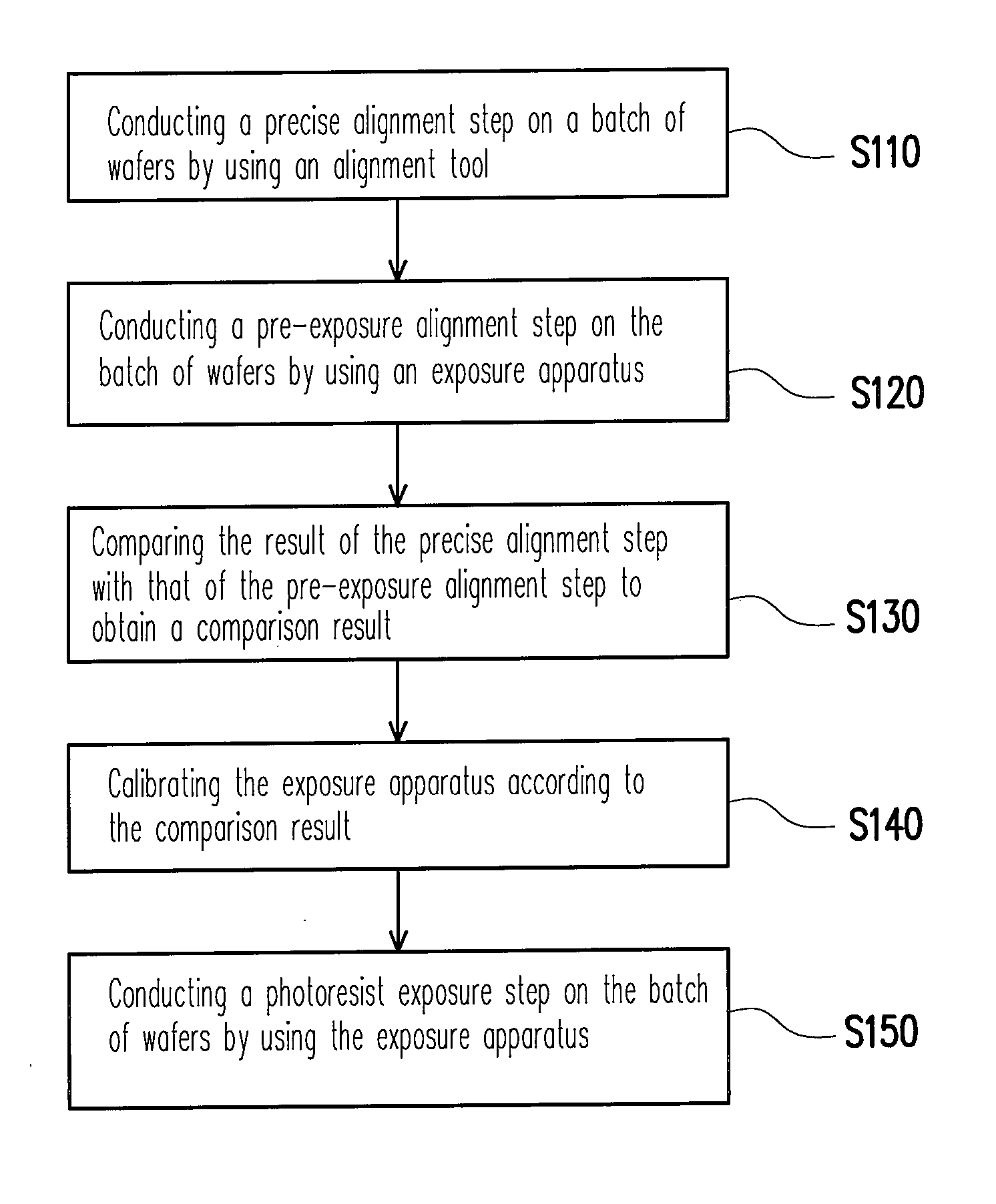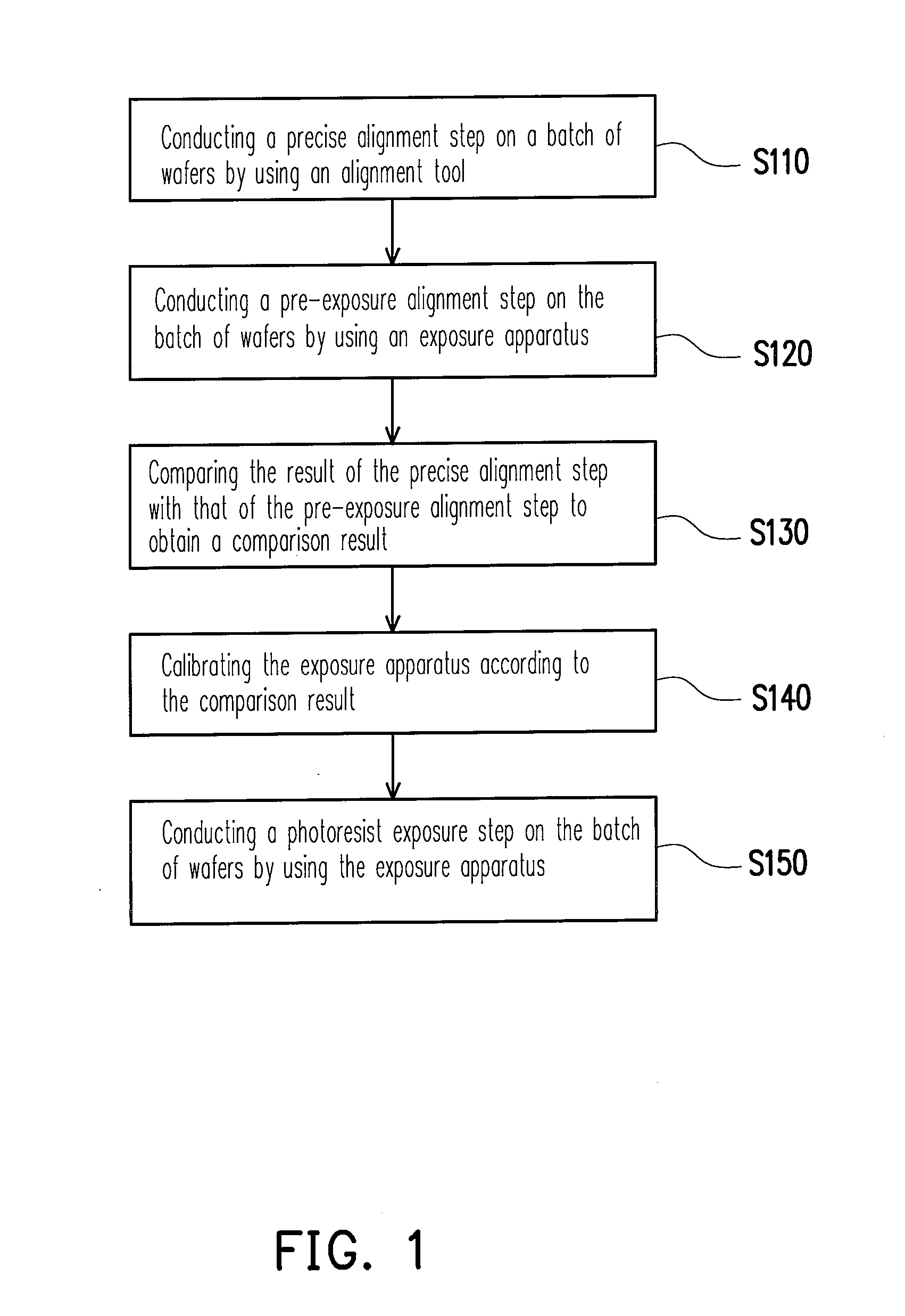Exposure method
a technology of exposure apparatus and wafer, applied in the field of exposure method, can solve the problems of affecting the alignment accuracy, and reducing the efficiency of the exposure apparatus, so as to achieve the effect of improving the alignment accuracy of wafers
- Summary
- Abstract
- Description
- Claims
- Application Information
AI Technical Summary
Benefits of technology
Problems solved by technology
Method used
Image
Examples
Embodiment Construction
[0029]Reference will now be made in detail to the present preferred embodiments of the invention, examples of which are illustrated in the accompanying drawings. Wherever possible, the same reference numbers are used in the drawings and the description to refer to the same or like parts.
[0030]FIG. 1 is a flowchart of an exposure method according to an embodiment of the present invention. The exposure method is suitable for a photolithography process, wherein a photoresist layer has been formed on the surface of each wafer.
[0031]Referring to FIG. 1, first in step S110, an alignment tool is used to conduct a first alignment step, i.e. a precise alignment step, on a batch of wafers. The precise alignment step is, for example, performing a precise alignment measurement on each wafer of the batch. In other words, in the precise alignment step, the number of the alignment marks measured on a wafer ranges between 400 and 500.
[0032]The alignment tool used in step S110 is, for example, an of...
PUM
| Property | Measurement | Unit |
|---|---|---|
| semiconductor | aaaaa | aaaaa |
| time | aaaaa | aaaaa |
| structure | aaaaa | aaaaa |
Abstract
Description
Claims
Application Information
 Login to View More
Login to View More - R&D
- Intellectual Property
- Life Sciences
- Materials
- Tech Scout
- Unparalleled Data Quality
- Higher Quality Content
- 60% Fewer Hallucinations
Browse by: Latest US Patents, China's latest patents, Technical Efficacy Thesaurus, Application Domain, Technology Topic, Popular Technical Reports.
© 2025 PatSnap. All rights reserved.Legal|Privacy policy|Modern Slavery Act Transparency Statement|Sitemap|About US| Contact US: help@patsnap.com



